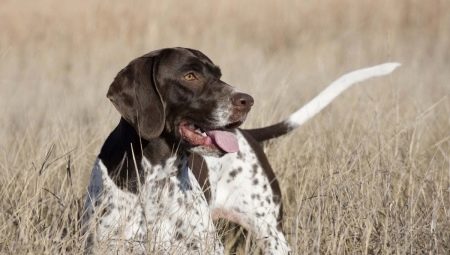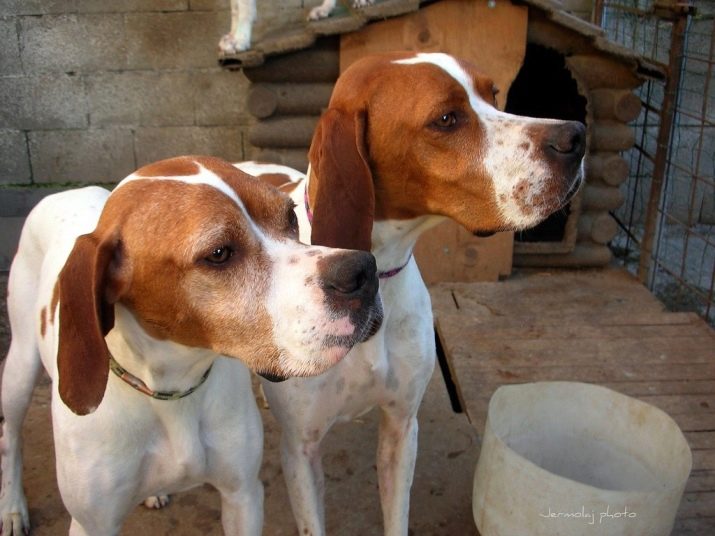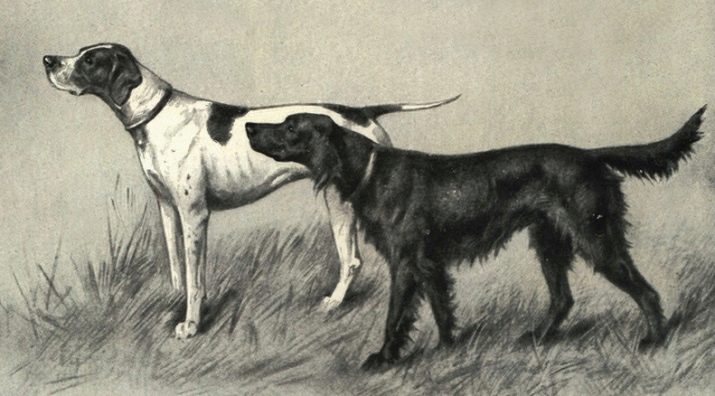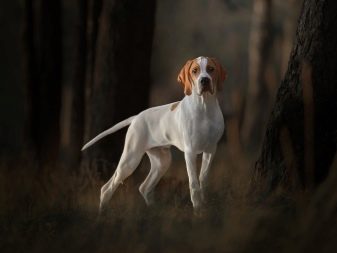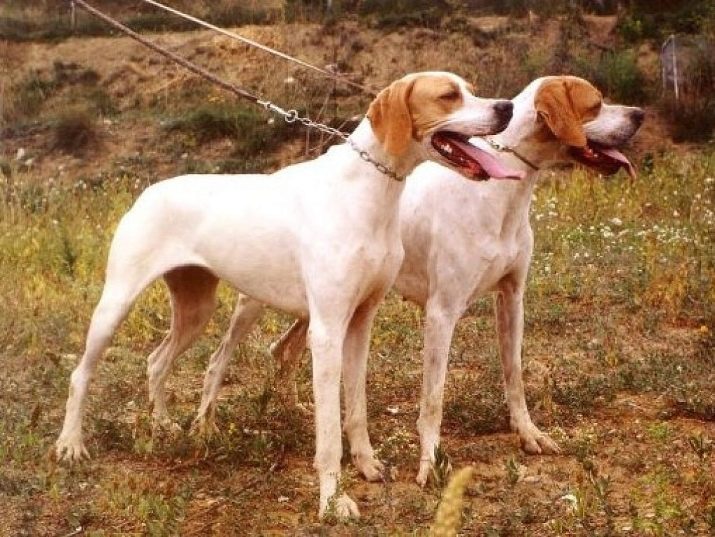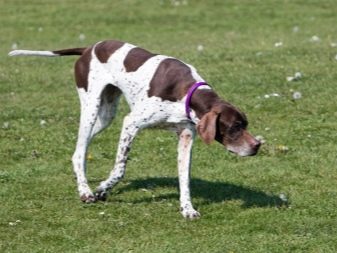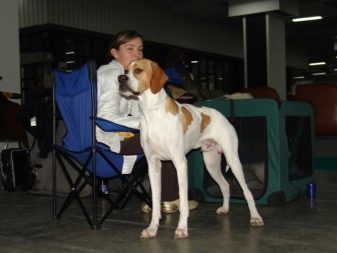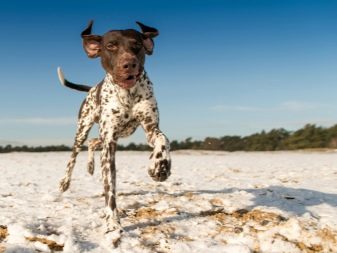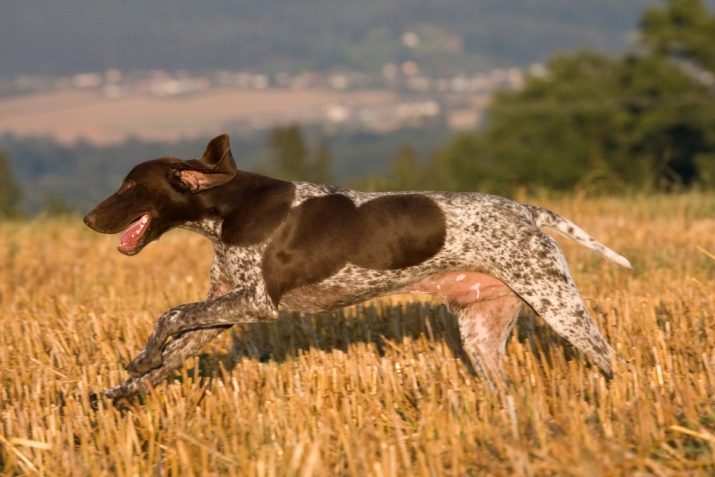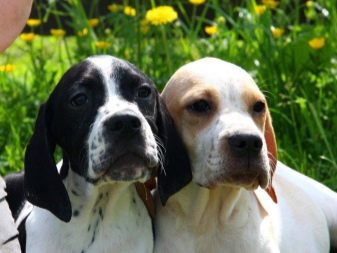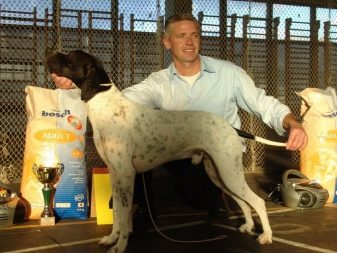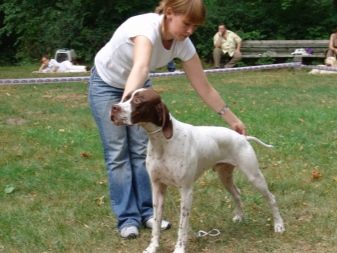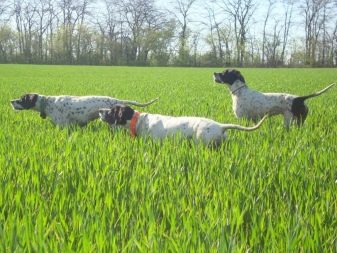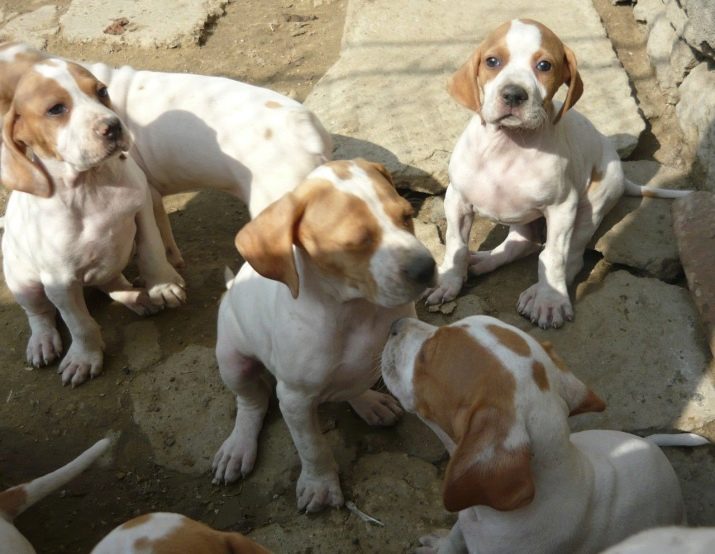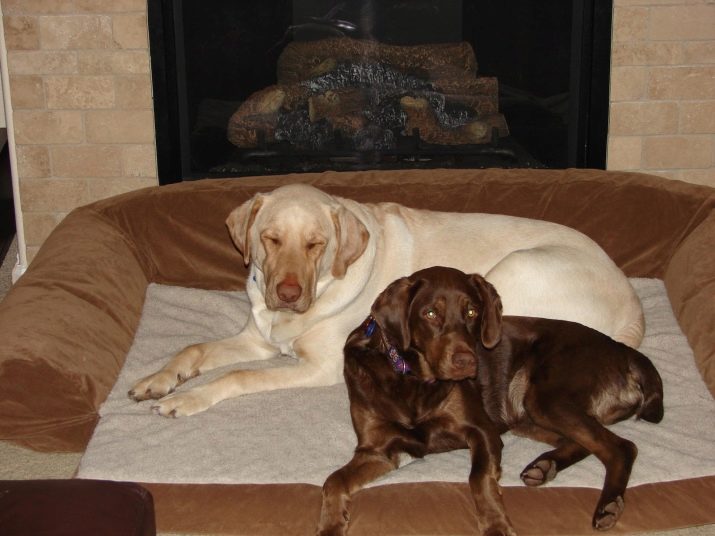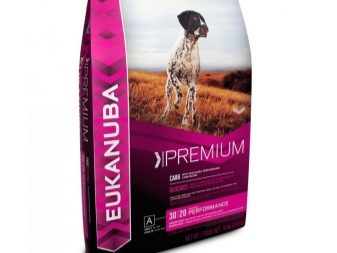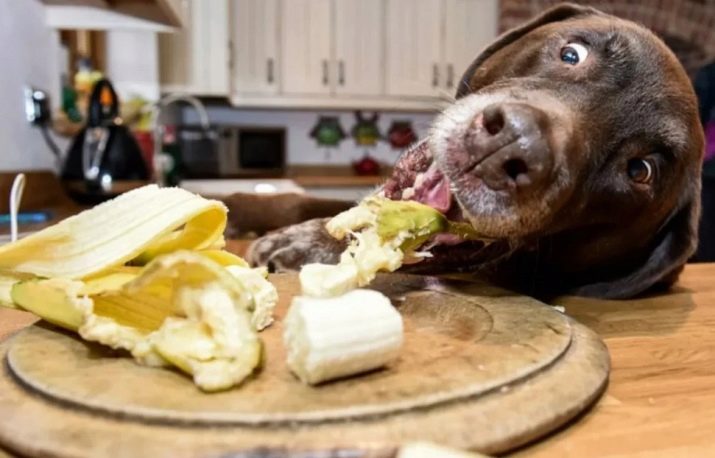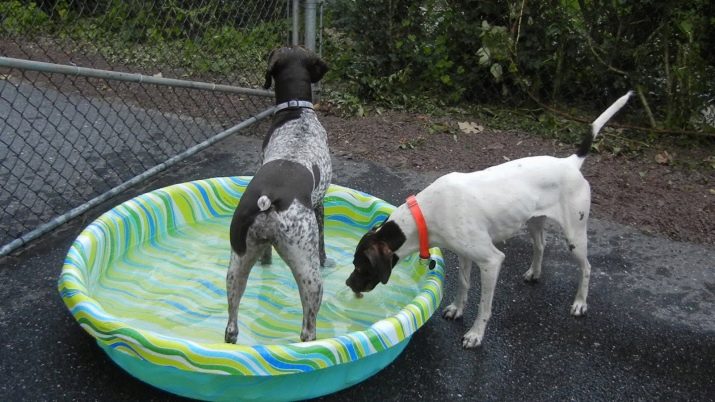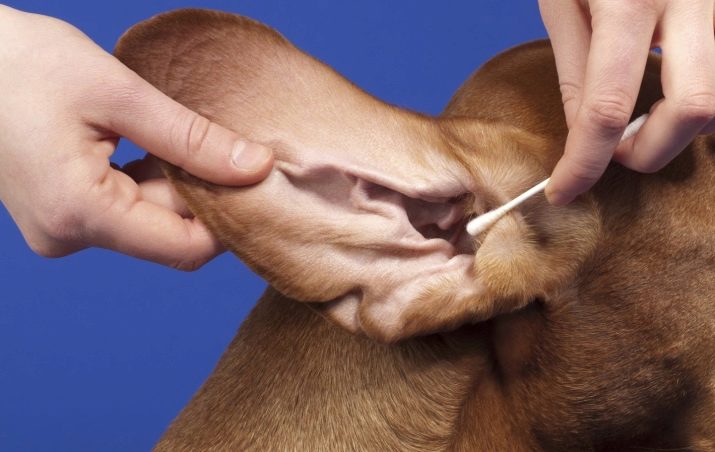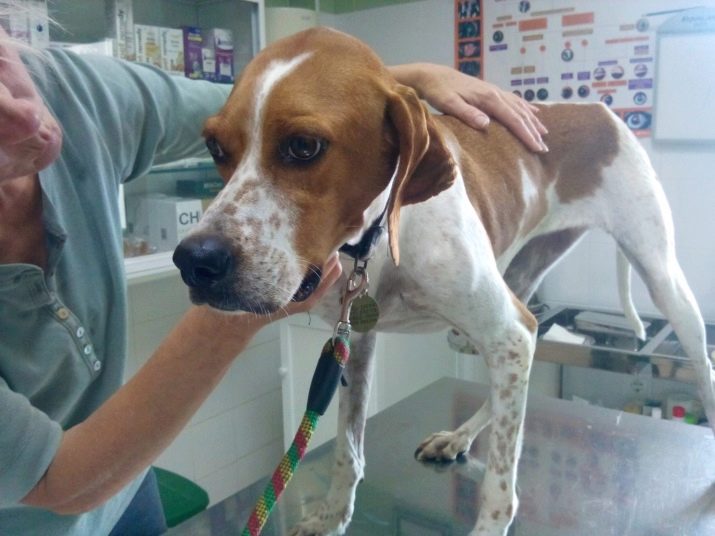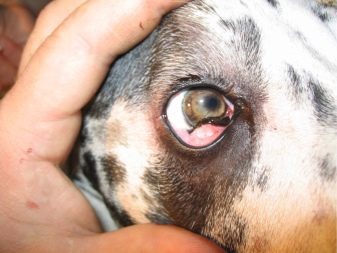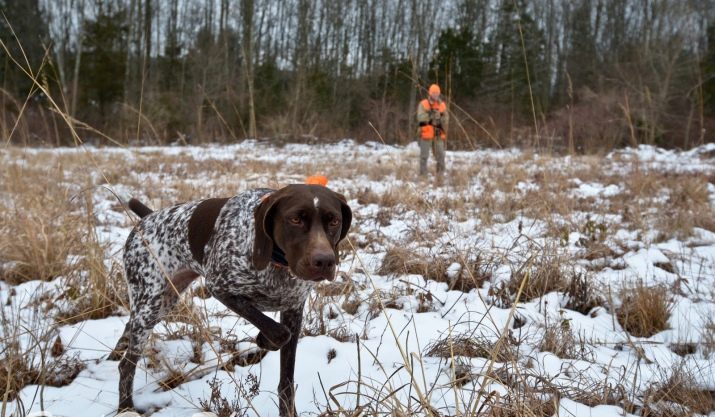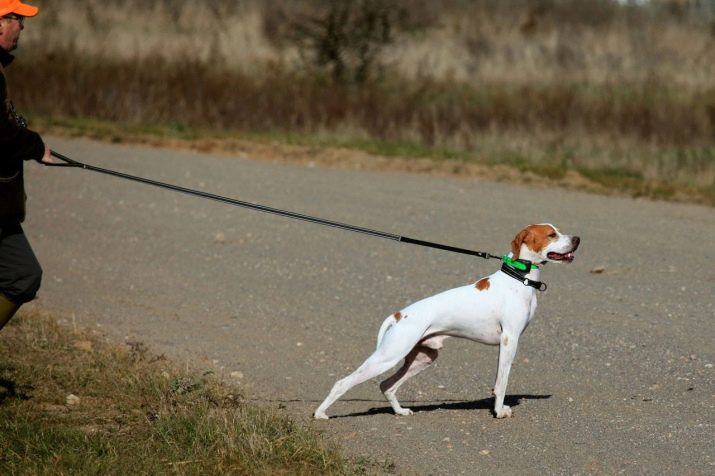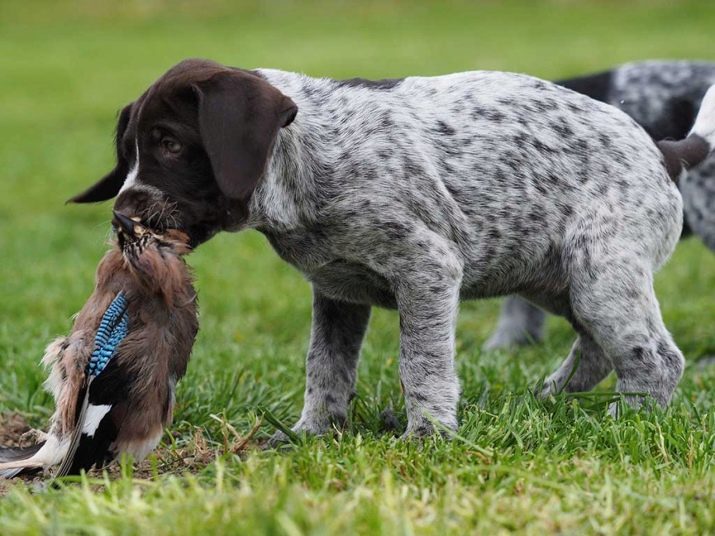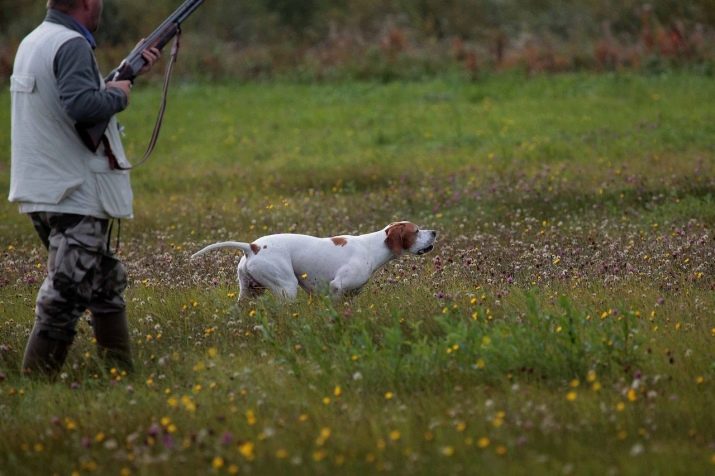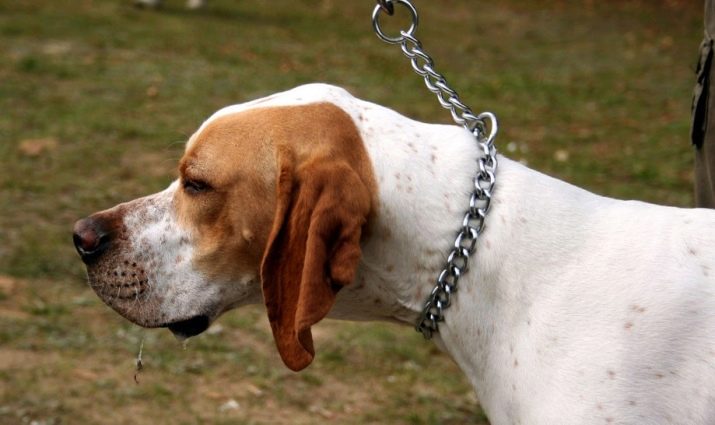The English hunting breed of dogs - Pointer has been an integral companion of the British nobility for centuries. The magnificent exterior, typical for the cops to become, high intelligence and aristocratic behavior make it a welcome participant in the trials and competitions at the most prestigious shows and exhibitions. Born hunters, pointers are transformed, it is worth only to sense the game. But not all lovers of this breed know all about their dogs.
What does the breed standard look like and when was it adopted? What dogs were used to create the pointers? Today, the breed is no less popular for its performance. And being used as companions, these dogs demonstrate the wonders of nobility and insight, literally guessing the desires of the owner. So who is he - Pointer: a tireless hunter or a chic companion of a British gentleman?
Description
Pointer is a breed of hunting dogs known to English breeders since the 17th century. Her ancestors include a Spanish cop dog, a foxhound, a greyhound, a greyhound, a bulldog and a setter. In the course of the selection work, the goal was set - to bring out an ideal gunman, capable of equally good walking along the air and ground tracks. The first samples were obtained with the predominance of the blood of the English Hounds, including the hounds on the blood trail. But the received livestock did not have a good character - it was possible to rectify the situation by using setters in the selection work.
The breed standard quite clearly and in detail describes how a modern English Pointer looks. It is worth noting that in the list of FCI the breed has the number 1 officially assigned to it, and the last changes to the document were made in 2009. According to the external characteristics, Pointers are often compared with the Kurzhaar and the Drathaar - smooth-haired and wire-haired cops of German origin.
According to the current standard, dogs have a height at withers, reaching 61-69 cm, body weight is not strictly regulated, but obvious signs of obesity are excluded. Desirable weight - no more than 25-34 kg.
Among other requirements are the following breed characteristics.
- The constitution is proportional, strong, dry, with a straight back, slightly convex lumbar.. The chest is well delineated, deep, goes into a long oval neck, suspension or excessive bending should not be present. The neck is well defined, the shoulders are wide.
- Limbs straight set, more muscular on the back. While driving, the stroke is smooth, the gait should not demonstrate intermittent movements. Bundles on the front limbs are well pronounced, visible in front and in motion. Pads are characterized by elasticity, pigmentation in the tone of the nose.
- The tail is quite long, strong, without too much grace. No knots and bends are allowed. Normally, it is carried at the level of the spine line, during movement it shifts in a horizontal plane.
- The head is voluminous, with a prominent forehead, pronounced occiput. The furrow is well defined, the stop is not smooth, but rather smooth, without a sharp transition. The muzzle is slightly upturned, with a wide nose - its color should be dark brown or lighter with a yellow shade of hair. For breed characteristic scissor bite with a full set of teeth.
- Eyes of the correct set, proportional, pigmentation of the eyelids in the tone of the nose. An excessively dark shade of the iris, a malicious or aggressive expression of gaze is not allowed. The basic color palette is brown.
- Ears of high landing, lowered down on the cartilage retain mobility. The tip is moderately sharp, a slight forward turn is allowed, like that of a rose petal.
According to the requirements of the standard Pointers should have a graceful, harmonious, but not too elegant physique. To the number of malformations include sagging or a hump in the back, bite, heterochromia, croup obliquity or wedge-shaped head.
Coat and color
English Pointers are smooth-haired dogs with no undercoat. The outer hair is dense, well fitting to the skin. Wool protects the body of the dog from hypothermia, forms a water-repellent coating. Its length is uniform and does not vary throughout the body, on the face the hairs are shorter.
Pure puppies of black color are practically not found, as well as the white variety.
Although they fit well with the norms of the standard, they are considered pedigree, but only in the absence of contrasting spots on the skin. Basically, in the litter, pointers are born in piebald colors with a white or colored background and spots of black, brown, yellow and red hues. Also let's say tricolor, but this coloring of wool is almost completely removed from everyday life, it is extremely rare.
Advantages and disadvantages
Dogs of English Pointer breed in general receive positive reviews, are considered a good choice for hunting and home maintenance. Among the advantages of the breed note:
- congenital hunting instincts;
- low level of aggression;
- high intelligence;
- excellent socialization - get along well with other animals;
- visual appeal;
- ease of care;
- good character.
Disadvantages are also present. These are usually attributed to a strong attachment to the person, creating difficulties in situations where the dog is left alone. A large cop and for keeping in a city apartment is not very suitable. In winter, the dog may freeze, requires additional heating with the use of overalls. Pointers need long walks - they are not suitable for people with low needs for physical activity.
Character traits
In nature, pointers are athletes who are ready for a lot to achieve. They are gambling, active, possess an almost inexhaustible supply of energy.
Such a dog necessarily needs physical exertion, rather intensive work in the field.
With a high level of activity, they maintain a good mood and optimal physical shape.
Pointer is a companion dog in dire need of human society. Representatives of this breed are strongly attached to the owner, yearn for him, hardly endure loneliness. Already at puppy age, you need to gradually accustom the dog to independence.
Affectionate, good-natured character of the English Pointer makes it an excellent pet for family content.
An animal of any sex gets along well with children, in the absence of danger, friendly to strangers. Cowardice and aggression in these dogs are considered developmental defects, such are carefully rejected during the entire time of breeding work.
Leadership is highly developed in hunting pointers.
It is very important from the very beginning to direct their development in the right direction, otherwise the dog has every chance of becoming a home tyrant.
It is better to raise an animal in a light, unobtrusive form. If the dog is not started up for hunting, it is worthwhile to find an occupation for it that allows you to regularly throw out energy. This may be a kind of sports, accompanying the owner in his walks or sports training.
Conditions for content
Keeping dogs of the Pointer breed requires providing the pet with sufficient space and freedom of movement. The best option would be a country house or a cottage with a fenced yard. The chain content is categorically inappropriate, in the aviary the animal will also be deprived of movement, will yearn for the owner.
In a city apartment, a pointer should be started only if there is a spacious free-range area nearby.
Dogs of this breed need medium bedding, located in the zone of visibility of the owner. It is worth considering that the animal quickly masters sofas and chairs. Having allowed the puppy to choose them as a place, one should not expect that an adult dog will deny itself the pleasure of using this particular object for sleep and rest.
What to feed?
The power supply of the pointer must take into account its high energy requirements. Ready feed make it easy to pick up the diet. You should choose specialized products for large breeds belonging to the class of super premium or holistic. Stamps will do Arden Grande, Eukanuba, Biomill. Adult dogs are fed twice a day. When feeding with dry food, it is imperative to provide the pet with free access to clean and fresh water.
When feeding on natural products, pointers should receive enough protein - in the form of natural meat of mutton, horse meat, beef, poultry (chicken, turkey), oceanic boiled fish. Among the sources of beneficial substances also include fresh eggs, natural cottage cheese. Carbohydrates are animals due to cereals - suitable oatmeal, buckwheat, rice. The source of fiber is vegetables - beets, carrots, cabbage. They are given in fresh or boiled form.
It is necessary to exclude any food from the master's table from the power of the pointer.
Spicy, salty, fatty foods that can adversely affect their health are contraindicated in dogs. In small quantities, the presence of butter is acceptable in the diet. Under the complete ban of sausages, sausages, tubular bones. To avoid allergies, the dog should be denied peanuts, chocolate, sweets.
How to care?
Caring for a pointer is quite simple. His short coat is replaced gradually, throughout the year, you can not be afraid of abundant molting. Brushing is done weekly using a rubber brush. Gentle wool will help soft suede or velvet. Bathing the animal is done as needed most often with strong pollution of the body, the appearance of an unpleasant odor.
Vulnerable areas of the pointer are the eyes and ears. They can be the basis for the development of the source of infection. To prevent infection, it is necessary to regularly carry out sanitary treatment and inspections, to remove the resulting pollution.
Flexible ears must be wiped inside with a cotton swab moistened with a special veterinary lotion.
Be sure to pay attention to the health of the dog's eyes.. Pointers have a predisposition to their inflammation, the development of chronic diseases. Third-century adenoma may develop. Daily treatment should include the removal of visible dirt from the coat.
With the appearance of redness, excessive tearing, you should contact your veterinarian.
The teeth of dogs of a breed of a pointer need regular inspection and cleaning. Special veterinary pastes are used. If tartar is detected, professional cleaning is recommended.
Required trimming claws, in the summer it is needed less often. In winter, the stratum corneum grins worse. It is worth from childhood to teach a puppy to cut the long part of the claw, otherwise an adult active dog simply will not allow to perform this task. In addition, you need to monitor the condition of the skin.
English Pointers are prone to the development of allergies, and dermatitis develops as food irritants, and under the influence of other external factors.
Upbringing and training
The unique features of pointers and their high intelligence allow dogs to easily assimilate the basic rules of behavior, even without additional efforts on the part of the owner. The animal does not need tough training, it is perfectly able to feel the permissible boundaries. The high level of socialization allows dogs to learn many skills simply by copying the behavior of the owner or other pets already living in the house.
Easily adopting good habits, pointers from puppyhood quickly learn the basic commands - their training gives the owner only positive emotions.
Absolutely to refuse training nevertheless it is not necessary. Pointers are naturally hyperactive, and in the absence of upbringing they can cause serious damage to the apartment and the property of the owner.
The positive attitude inherent in the representatives of this breed will continue even after training. But the flow of energy will become manageable.. In addition, the dog itself will be easier to interact with others, knowing what they want from it.
Pointers are non-aggressive by nature - they always show miracles of patience towards children and domestic animals and never show a negative reaction.
But this does not mean that in case of danger the animal will simply allow someone to offend the owner or create a threat to his property. A large and strong dog with success will neutralize even the larger enemy, will show tactical thinking and an enviable fearlessness in a fight.
Parenting for the hunt
Working skills are embedded in pointers from nature. Even if the parents were not taken out to hunt, their puppies are more likely to be able to cope with their tasks. The first unconscious racks the dog makes already in 2-3 months, at the same age, the observation of the animal increases. In the presence of a working mother, puppies are willing to take all droppings to the forest, and they feel quite confident in adopting the habits of a parent.
In the hunt pointers demonstrate the ability to self-education. If other cop breeds by 6–7 years old already lose their skills in the field, these dogs only become better in their hunting qualities. In the process of pulling a puppy, predominantly game techniques are used, without coercion and the use of physical force. The breed adapts well to work on waterfowl, is able to track down and drive the hare without visible effort.
It is important to remember: the pointer is aimed at the chase. Moreover, both an animal and any moving object can become its object. Taking the trail, he may not hear the commands, stops responding to the call of the owner. In order to avoid dangerous situations, it is extremely undesirable to let the dogs off the leash outside hunting.
In the next video you can watch the work of the English Pointer on the hunt.
